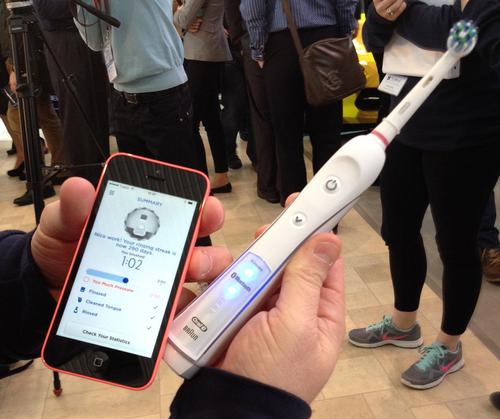By Jennifer Baljko | Freelance writer| Ebnonline.com
Sensor-filled wristbands feeding personal tracking and health data up to the cloud. Smartphone-connected toothbrushes. Bluetooth-enabled scales. Lighting systems controlled with apps on tablets. Garbage containers that relay messages to city planners who can optimize trash collection services. Cars that talk to other cars and sense ways to avoid accidents.
The face of mobile devices and machine-to-machine connectivity is changing the Internet of Things (IoT), and IoT is winning a lot of attention from the tech sector and adoration from Wall Street, investors, and venture capitalists.
In fact, the market is growing hand over fist. Global machine-to-machine (M2M) connections are expected to hit a quarter of a billion this year, according to a recent report by the GSMA. In 2013 that number reached 195 million M2M, showing a growth curve of nearly 40% per year between 2010 and 2013. Estimates from various sources for the number of IoT-enabled devices coming to market by 2020 reach well into the billions — double-digit billions, like 20 billion to 50 billion.
“We are now living in a world where every device, machine or appliance can be wirelessly connected to the Internet, providing a wealth of real-time information that can transform how people live and work,” said Hyunmi Yang, GSMA’s chief strategy officer, in a statement.
The buzz is bubbling up, and it’s time for supply chain professionals to start paying attention. The days of avoiding the IoT (remember when it used to be called embedded computing?) are gone. If consumer brands like Oral-B can get into the space with smart electric toothbrushes that interface with mobile apps, then who knows what other kinds of devices will be coming to market demanding new hardware form factors; a wide range of component parts; and high levels of software, hardware, and cloud integration.
It’s not difficult to imagine, for instance, how chipsets, sensors, or other parts may have to be redesigned to work on a range of devices that are not natively or inherently digital. Appliances like air conditioners, heating units, water coolers, and coffee makers (and toothbrushes!) come to mind.
Batteries, too, will also need a makeover, or more likely, a complete overhaul. How will that nifty Bluetooth-connected wristband tracking exercise, sleep, and diet patterns become an embedded part of a person’s daily routine if it quickly saps power from the mobile phone and has to be recharged every couple of days?
Of course, data-fusion capabilities are also going to be needed to collect, sort, and make sense of the heaps of information that will be routed through these devices.
That’s just the beginning. The supply chain side comes with its own set of risks, benefits, and sourcing implications.
Like, if you’re an OEM entering this promising new field of IoT, how are you going to secure supply? And if you’re a component maker, how can you serve the needs of a company like Procter & Gamble or other OEMs that don’t have long ties to the electronics industry?
And, the headache of developing a purchasing forecast based on possible demand. Uff! That will be hard! No one knows how big this space will be, how many different players there will be, or how quickly consumers will latch onto these devices and related services. It’s a nascent market that could soar or flop or reach only mediocre adoption levels.
IoT could be another supply chain planning wrench that turns the industry upside down. Or it could be a boon for people thinking ahead. What do you have in your supply chain toolbox that will help you make the best of this next big thing?


